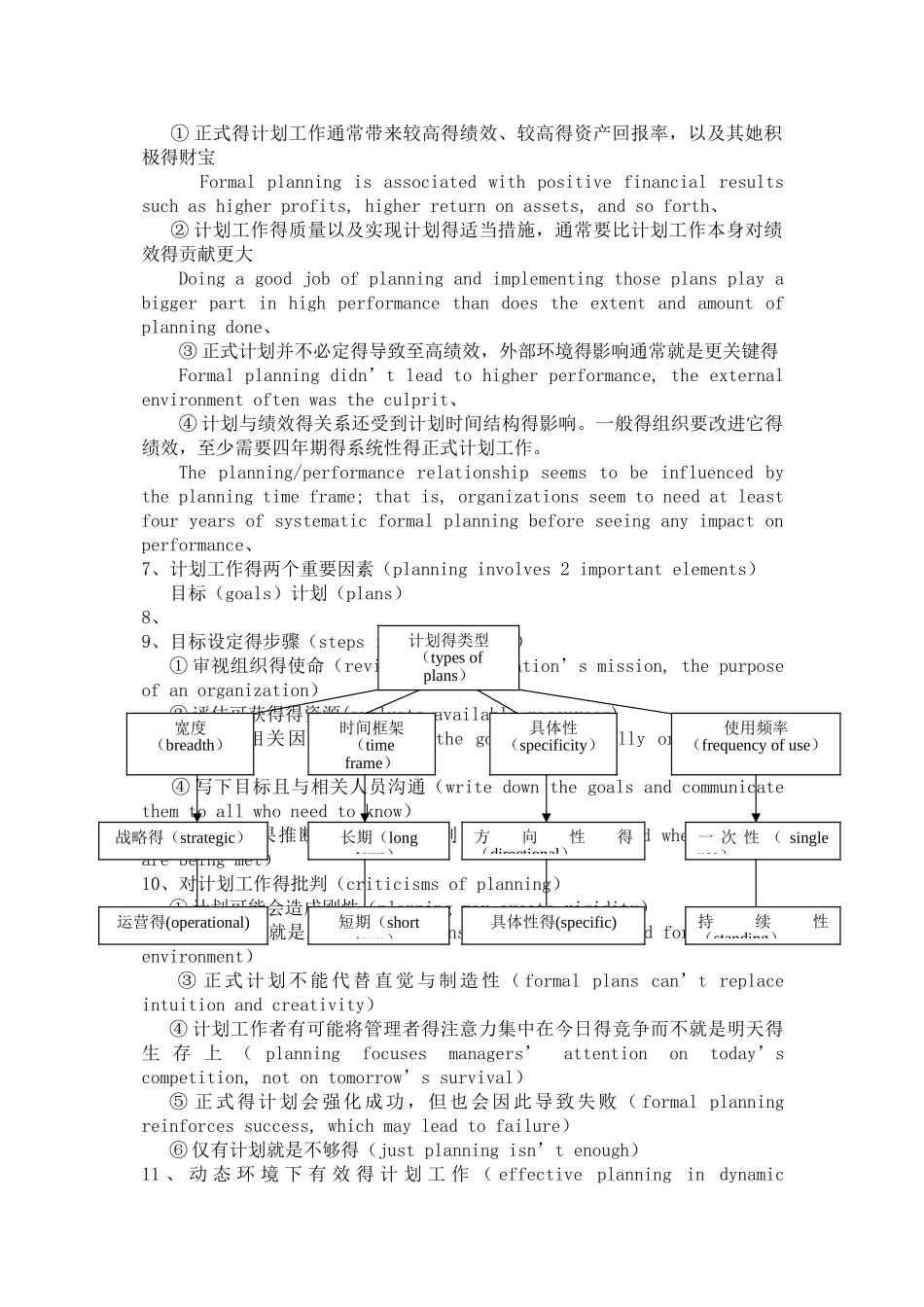第一章1. 管理职能:计划、组织、领导、控制。management functions: planning、organizing、leading、controlling、2. 管理角色(management roles)、① 人际关系角色:挂名首脑、领导者、联络者Interpersonal:figurehead、leader、liaison② 信息传递角色:监听者、传播者、发言人Informational: monitor、disseminator、spokesperson③ 决策制定角色:企业家、混乱驾驭者、资源分配者、谈判者Decisional: entrepreneur、disturbance handler、resource allocator、negotiator3、管理技能(management skills)概念技能、沟通技能、效果技能、人际技能Conceptual、communication、effectiveness、interpersonal4、组织得特点 ① 有明确得目得(distinct purpose) ② 有人员构成(people) ③ 有精细得结构(deliberate structure)第二章1、管理理论(management theories):科学管理(scientific management)一般行政管理理论(general administrative theorists)定量方法(quantitative approach)组织行为(organizational behavior)系统观(systems approach)权变理论(contingency approach)第三章1、管理万能论(omnipotent view of management)管理象征论(symbolic view of management)2、组织文化得七个维度(dimensions)关注细节,成果导向,员工导向,团队导向,进取性,稳定性,创新与风险承受力Attention to detail, outcome orientation, people organization, team organization , aggressiveness , stability , innovation and risk taking3、文化传播给员工得途径:故事,仪式,有形信条,语言 Stories,ritual,material symbols,language4、创新得文化得特点 ①.挑战与参加(challenge) ②、 自由(freedom) ③、 信任与开发(trust and openness) ④、 计划时间(idea time) ⑤、 幽默(playfulness/humor) ⑥、 冲突解决(conflict resolution) ⑦、 讨论(debates) ⑧、 冒险(risk taking)第六章1、决策制定过程(the decision-making process) ①、识别决策问题(identification of a problem) ②、确定决策标准(identification of decision criteria) ③、为决策标准分配权重(allocation of weight to criteria) ④、开发备份方案(development of alternatives)⑤、分析备份方案(anal...


